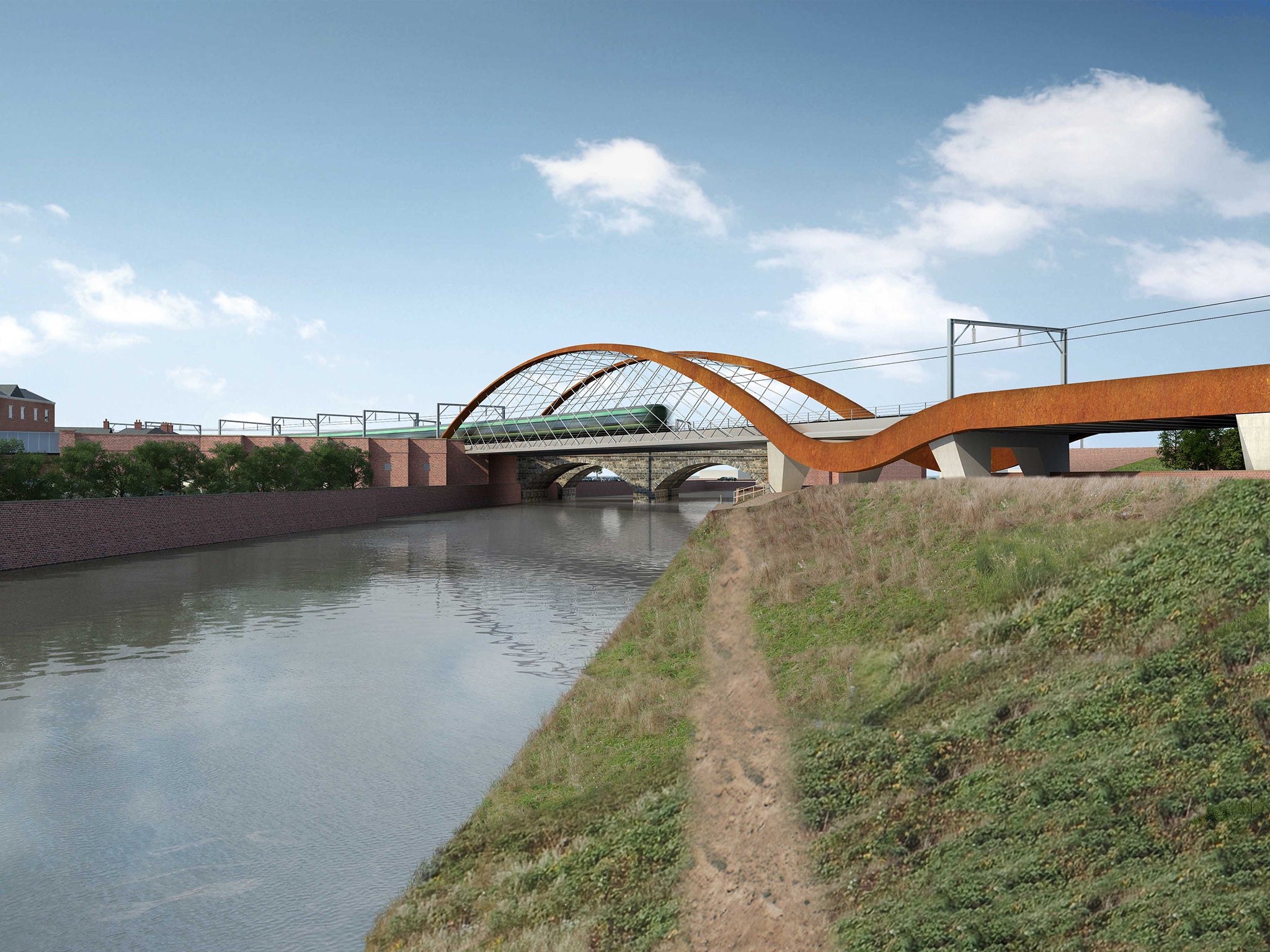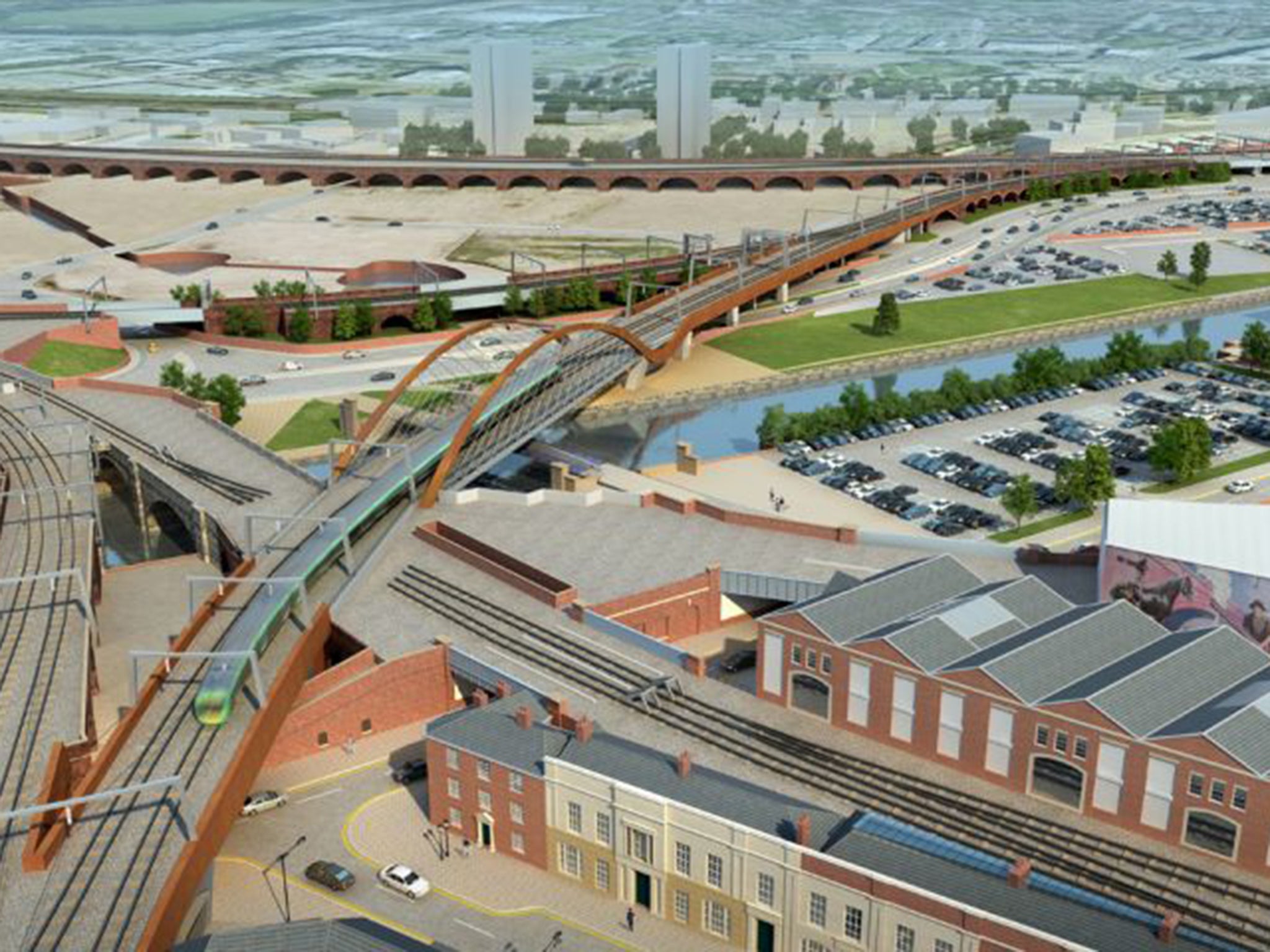Planned rail bridge connecting Manchester's Victoria and Piccadilly stations will cause 'catastrophic damage' to heritage site, say critics
The new link could act as a gateway to economic growth, but damage Manchester’s 185-year-old Grade I-listed Liverpool Road Station

Your support helps us to tell the story
From reproductive rights to climate change to Big Tech, The Independent is on the ground when the story is developing. Whether it's investigating the financials of Elon Musk's pro-Trump PAC or producing our latest documentary, 'The A Word', which shines a light on the American women fighting for reproductive rights, we know how important it is to parse out the facts from the messaging.
At such a critical moment in US history, we need reporters on the ground. Your donation allows us to keep sending journalists to speak to both sides of the story.
The Independent is trusted by Americans across the entire political spectrum. And unlike many other quality news outlets, we choose not to lock Americans out of our reporting and analysis with paywalls. We believe quality journalism should be available to everyone, paid for by those who can afford it.
Your support makes all the difference.When the world’s first passenger railway line opened between Liverpool and Manchester on 15 September 1830, it sparked an explosion in inter-city train travel and helped northern England to become the engine room of the Industrial Revolution. Now, 185 years later, the station at the end of that line has become the focus of a legal dispute that threatens to derail plans by Chancellor George Osborne to build a 21st-century Northern Powerhouse.
Network Rail plans to erect an £85m rail bridge across the river Irwell in Manchester to connect the city’s Victoria and Piccadilly stations for the first time, and to uncork a major bottleneck on the clogged, modern railway.
The new link, called the Ordsall Chord, could act as a gateway to economic growth by helping trains to get around the city more quickly and by making Manchester airport more accessible. But, as this week’s anniversary approaches, Mark Whitby, an ex-president of the Institution of Civil Engineers and a former Network Rail consultant on the Ordsall Chord, is preparing to go the High Court on 24 September to try to halt the project.

Mr Whitby, a civil engineer, says the chosen route will cause “catastrophic damage” to Manchester’s 185-year-old Grade I-listed Liverpool Road Station, because the new bridge will disrupt the site and cut off the station from the rail network. As a result, steam locomotives and other heritage trains will beunable to arrive at Liverpool Road. The Prince of Wales visited the station on a royal train in 2010.
According to Mr Whitby, “errors in the decision-making process” led the Secretary of State for Transport, Patrick McLoughlin, to approve the scheme following a public inquiry.
Mr Whitby told The Independent on Sunday: “The complex at Liverpool Road is arguably one of the most significant railway sites in the world, and is undoubtedly the place where the modern world began. I have mounted what is a last-ditch attempt to see the decision reversed.I want to see the Ordsall Chord project happen, but I don’t want to see it happen at the expense of the station, which is the foundation stone of our engineering heritage.”
The station, with its platforms and first-class booking hall, is part of Manchester’s Museum of Science and Industry, which dropped its objection to the Ordsall Chord last year – 18 months after it warned that the scheme would have a severe impact on visitor numbers and revenue.
The museum later disclosed that it had been offered £3m by Network Rail to help “bring to life previously untold stories from the early years of the railway station”. It insists that its own steam train will continue to run, but on a “shorter route”.
Sally MacDonald, the museum’s director said: “The construction of the Ordsall Chord is a reflection of the same kind of world-changing idea that first brought the railway to Manchester. It will involve new kinds of engineering and bridge construction, offering job opportunities for North-West companies. Just as in 1830, the rail link will be revolutionary for Manchester.”
Network Rail says it remains committed to the project, part of a £1bn plan to improve the region’s railways. Work was due to start this month. The Department for Transport intends to contest the legal challenge.
But the scheme has other critics, including community groups and heritage officials, who, like Mr Whitby, are concerned about the future of Liverpool Road.
Duncan Wilson, the chief executive of Historic England, said: “While we recognise that the Ordsall Chord will bring transport benefits, we advised against the proposed scheme as there was a potentially viable alternative route that would avoid serious harm to our railway heritage”.
Sir Neil Cossons, former director of the Science Museum in London and a former English Heritage chairman, said: “Liverpool Road Station defined the 19th century.
“It’s as important as any of the ancient historical places in Egypt.”
Join our commenting forum
Join thought-provoking conversations, follow other Independent readers and see their replies
Comments